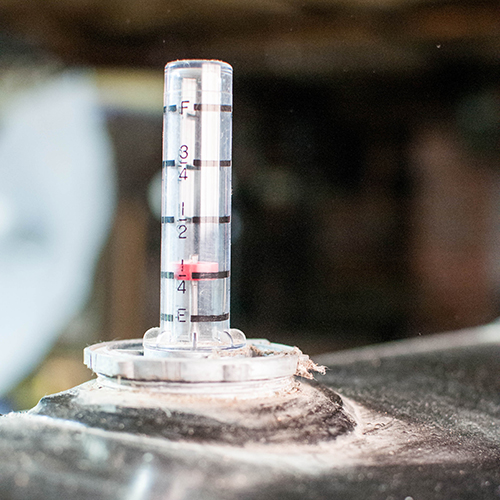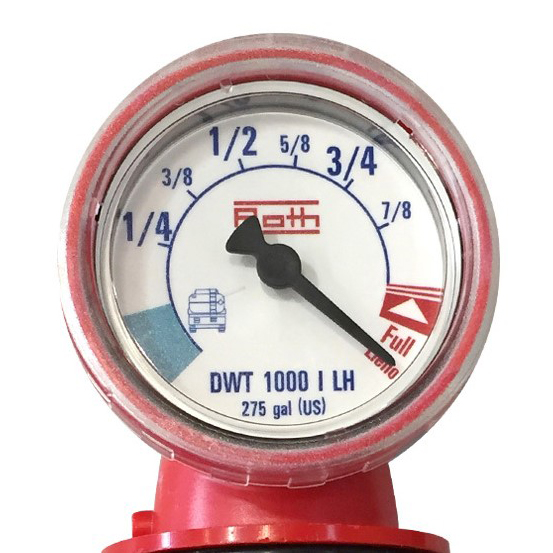Order Oil When Your Tank Is at ¼ Capacity
Check the sight glass on your oil storage tank. When the bottom of the marker reaches the ¼ mark, it’s time to place your oil order. Oil tanks are distinguished by their size, but that’s not exactly the same as their capacity. Oil tanks need a bit of breathing room and therefore can hold only the majority of their total. Here are some helpful guidelines to help you know how much heating oil to order from Atlantic Oil Company.
275-Gallon Oil Tank (Typical Residential Size)
¼ of a 275-gallon oil tank is about 60 gallons. That means when your tank is at ¼ capacity, you should order 180 gallons of heating oil to top it off. A standard residential tank of 275 gallons (standard residential size) can hold 260 gallons.
330-Gallon Oil Tank
¼ of a 330-gallon oil tank is about 75 gallons. That means when your tank is at ¼ capacity, you should order 225 gallons of heating oil to top it off. A slightly larger tank of 330 gallons can hold 300 gallons of oil.
550-Gallon Oil Tank
¼ of a 550-gallon oil tank is about 120 gallons. That means when your tank is at ¼ capacity, you should order 360 gallons of heating oil to top it off. A large tank of 550 gallons can hold 520 gallons of oil.
Ready to place your oil order? You can do so easily right here on our website.
How Much Oil Will My Home Use Each Year?
That’s a great question—and one that’s nearly impossible to give a blanket answer to. There are dozens of things that affect your heating oil usage, such as the size of your home, its insulation, your family’s heating preference, the efficiency of your oil-fired furnace or boiler, and the climate where you live.
We have found that the majority of our Essex County Massachusetts and Seacoast New Hampshire customers use about 4-7 gallons a day when the daily temperature averages 32 degrees and used an average of 800–1100 gallons of heating fuel each year, but that is a loose estimate and can easily change based on any or all the variables listed above. For a better estimate, consider writing down your oil orders this year and use it as a guide for winters to come!
How to Read Your Oil Tank Gauge
It is important to regularly check your oil tank gauge so that you know when to order to avoid the possibility of running out. Here’s is a quick guide on how to read your heating fuel oil tank gauge:
- Visit your oil tank, it is most likely in your basement or can be outdoors.
- Locate the oil tank gauge, commonly located on the top of the oil tank. Most popular oil tank gauges are a glass or plastic cylinder with a floating marker inside or a round dial and needle like a car’s speedometer.
- Read the gauge like the gas gauge on your car. There will be markers for F, ¾, ½, ¼, and E. The floating marker inside the cylinder gauge should be read from the top down. In the example shown, the red marker is showing more than ¼ remaining, it would be good timing to place an order within the day.
- If your fuel oil gauge reads ¼ or below, you should order oil immediately. We recommend ordering fuel oil before your tank reaches below ¼ full.
Important Safety Notice:
Running your tank down to or below 1/8 capacity is dangerous. By drawing from the very bottom of the tank, your furnace or boiler can pick up sediment, clogging the filter. This unfortunate situation most often results in a no-heat emergency and a stressful service call to your local provider. To prevent this stressful and expensive situation, be sure to place your order by the time your tank reaches ¼ capacity.


